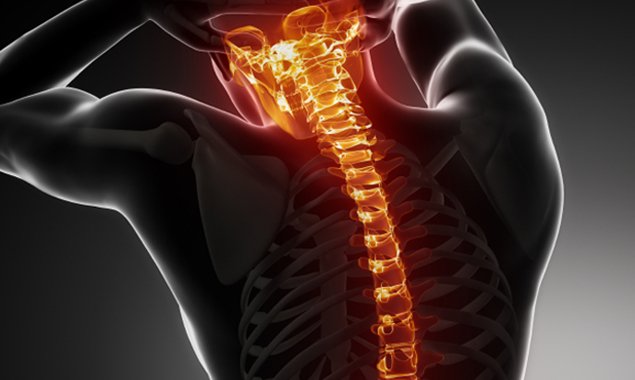As you delve into spinal cord injury research, prepare to be captivated by the groundbreaking advancements poised to transform the landscape of medical science. It’s an exhilarating time for healthcare professionals, researchers, and patients alike, as novel treatments emerge with the potential to revolutionize recovery prospects and restore hope.
Whether you’re looking for a South Bend spinal cord injury lawyer, this article offers an in-depth exploration of the most promising therapies, drawing on the latest scientific discoveries and innovative techniques.
Understanding Spinal Cord Injuries: A Brief Overview
What is a Spinal Cord Injury?
A spinal cord injury (SCI) represents a significant disruption of the spinal cord, often resulting in irreversible changes to strength, sensation, and other bodily functions below the site of the injury. These injuries can be caused by traumatic events such as car accidents, falls, or sports-related incidents.
The severity of a spinal cord injury (SCI) is determined by the extent of the damage and the specific location on the spinal cord. It impacts the body’s ability to transmit signals between the brain and the rest of the body.
Types and Consequences of SCIs
SCIs are classified as either complete or incomplete. A complete SCI results in total loss of function below the injury level, while an incomplete SCI allows some sensory or motor function to persist.
The consequences of SCIs can vary dramatically, ranging from mild sensory deficits to severe paralysis, profoundly affecting an individual’s quality of life and independence. Rehabilitation and adaptation play crucial roles in managing these consequences, emphasizing the importance of ongoing research in this area.
Recent Breakthroughs in Spinal Cord Injury Research
Innovations in Regenerative Medicine
Recent advancements in regenerative medicine have been transformative in the field of spinal cord injury (SCI) research. Stem cell therapy, in particular, has shown promise in restoring function by promoting the regeneration of damaged neurons and supporting the repair of neural pathways. Studies have shown that stem cell transplantation can lead to significant improvements in motor function and sensory recovery.
Neuroprotective Strategies
Neuroprotective strategies are another area of breakthrough. Researchers focus on minimizing secondary damage post-injury by using drugs and therapies that reduce inflammation and prevent cell death. These interventions aim to preserve as much neural tissue as possible, improving long-term outcomes for patients with spinal cord injuries.
Advances in Electrical Stimulation
Electrical stimulation technologies are being refined to enhance mobility and function for individuals with spinal cord injuries (SCIs). By implanting devices that deliver electrical impulses to the spinal cord, researchers have enabled some patients to regain partial movement and control over their limbs. This innovative approach holds significant potential for enhancing the quality of life for individuals affected by SCIs.
Promising Treatments and Therapies on the Horizon
Regenerative Medicine
In spinal cord injury research, regenerative medicine is a beacon of hope. This innovative approach focuses on repairing or replacing damaged cells through stem cell therapy. Stem cells can transform into any cell type, offering potential to regenerate nerve cells and restore function. Recent clinical trials have yielded promising results, with patients experiencing improvements in motor skills and sensation.
Neuroprosthetics
Another groundbreaking area is neuroprosthetics, which combines robotics with neural technology. These devices bridge the gap between the brain and the body, enabling individuals with spinal cord injuries to regain control over limb movements. Through sophisticated sensors and algorithms, neuroprosthetics interpret brain signals to execute desired actions, providing users with enhanced independence and mobility.
Gene Therapy
Gene therapy is also gaining momentum as a promising treatment option. This approach involves altering or repairing faulty genes responsible for nerve damage. Researchers aim to inhibit scar tissue formation and promote nerve regeneration by inserting therapeutic genes. Though still in experimental phases, gene therapy promises to transform the landscape of spinal cord injury treatments soon.
Innovative Technologies Transforming Spinal Cord Injury Recovery
Advanced Prosthetics and Neuroprosthetics
The integration of advanced prosthetics and neuroprosthetics is revolutionizing recovery for individuals with spinal cord injuries. These technologies connect directly to the nervous system, enhancing mobility and control.
For instance, brain-machine interfaces (BMIs) enable patients to control prosthetic limbs with their thoughts, bridging the gap between intention and action. This advancement fosters physical movement and a profound reconnection with autonomy.
Regenerative Medicine and Stem Cell Therapy
Regenerative medicine is gaining momentum with stem cell therapy at its core, offering new hope for repairing damaged spinal cords. Stem cells have the potential to regenerate nerve cells, restore function, and reduce inflammation. Ongoing clinical trials are yielding promising results, paving the way for future treatments that could significantly enhance patients’ quality of life and functional recovery worldwide.
Wearable Technology and Exoskeletons
Wearable technology, particularly exoskeletons, is providing unprecedented opportunities for rehabilitation. These robotic suits enhance the wearer’s movement, allowing for physical therapy in a controlled and safe environment.
Promoting early mobilization and repetitive movement, exoskeletons help to prevent complications such as muscle atrophy and joint stiffness, crucial aspects of the recovery journey.
Final Thoughts
Navigating the promising developments within spinal cord injury research puts you at the forefront of medical evolution, where hope is not just a fleeting sentiment but a tangible prospect. Whether you’re looking for a South Bend spinal cord injury lawyer, the breakthroughs discussed not only illuminate a path toward improved quality of life for patients but also inspire a broader vision for future innovations.
